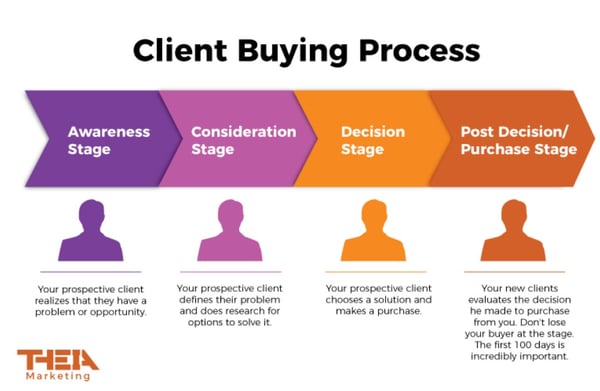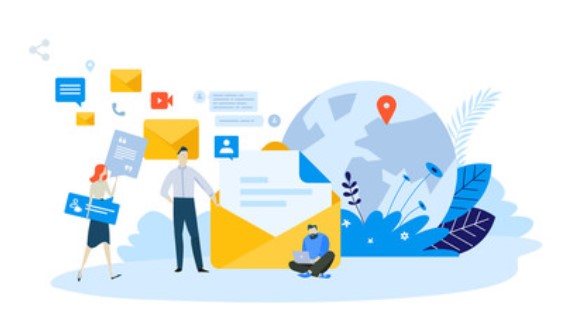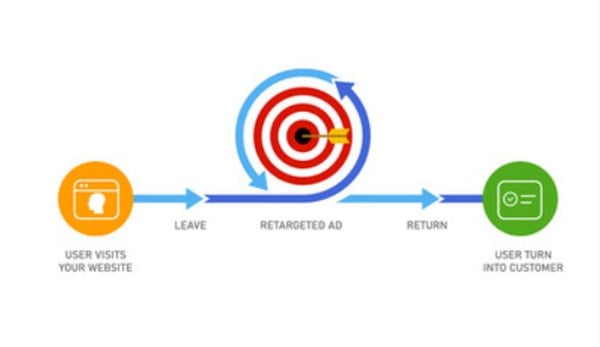Defining a lost lead
A lost lead is one that has stalled in your lead nurturing process and has not converted into a sale yet. This often means they are not opening your emails, or they recently unsubscribed from your email list.
The truth is that losing B2B leads is a natural part of the lead nurturing process. Email marketing databases decrease naturally by about 22.5% every year. Sometimes your sales team will reach their conversion goals, and other times they won’t. Your CRM tool can help identify which leads have gone cold.
When creating a strategy to reengage with lost leads, your aim should be to regain their interest and convert them into new sales opportunities. Your team needs to understand which prospects are sales qualified and marketing qualified.
Generic Leads vs. Sales Qualified Leads (SQL) vs. Marketing Qualified Leads (MQL)
Once you have collected new leads, you need to nurture them in such a way that they are familiarized with your brand and trust you enough to buy your products and services. Keep in mind that the more they need to invest, the harder you will need to work to earn their trust.
To ensure you are nurturing your prospects the right way, it’s best to know if a prospect is ready to make or purchase or not.
As a B2B company, every lead is a business that may or may not be ready to buy or be a fit for your product. To determine this, you’ll need to pinpoint where they are in the client buying process.

When you take the time to identify where your prospects are within this process, you can cultivate a relationship with them that can improve your sales conversion rates. When done correctly, it is possible to generate revenue from fewer, high-quality leads if nurtured appropriately.
Generic lead
A generic lead is someone who has expressed an interest in a specific offer. They may download a lead magnet or complete a lead form out of curiosity and may not be able to afford to purchase from you. As a result, they may stop interacting with your brand. For these reasons, they are considered low-quality leads.
Marketing Qualified Lead (MQL)
An MQL is one that has demonstrated curiosity in your offer based on your marketing efforts and is more likely to become a customer than non-qualified leads. They are curious about your organization and may consider making a purchase but have not taken that step.
MQLs show an interest in your brand by submitting their content information, downloading a lead magnet, repeatedly visiting your business website, clicking on a PPC ad, or opting for a free trial or demo.
The biggest differentiator between a generic lead and an MQL is that the latter has interacted with your brand multiple times, while a low-quality lead has not.
Every business will develop a profile for an MQL that fits their needs. This criterion will be based on the habits of other leads and past customers and certain demographic information, which can include:
- Job title,
- Type of business or organization,
- Business location, and
- Company size.
While MQLs have gone out of their way to engage with your brand, they are not ready to buy but may be open to doing so. Once they indicate they are prepared to purchase, you can consider them a Sales Qualified Lead (SQL).

Sales Qualified Lead (SQL)
SQLs are typically upfront about their desire to make a purchase. Aside from engaging with your brand the way an MQL would, they usually request a quote or purchasing information, may ask to speak with a sales representative or a live demonstration.
Approximately 5-15% of all leads are initially SQLs, which means that B2B marketing and sales teams should work together to define the criteria that determine which leads should be nurtured for higher sales.
How to reattract a lost lead
B2B company leads grow cold for several reasons – their contact details have changed, your team isn’t responding to communication on time, or you’re asking for too much information on your lead capture forms.
Whichever is the case, a cold lead may still be worth pursuing. However, before you decide to reengage a prospect, make sure they are a qualified lead. The last thing any business needs is to invest time and other resources into reengaging someone who has a slim chance of becoming a paying customer.
To reattract lost leads the right way and increase your chances of converting them from prospects to customers, you will want to strike a balance between reaching out to generate interest and avoid seeming too pushy.
There are two effective methods you can use to reengage your lost leads: multi-channel and multi-device marketing and remarketing.
Multi-channel and multi-device marketing
Multi-channel and multi-device marketing refers to the implementation of a single marketing strategy across various channels and devices.
Examples of different channels include:
- Blog posts on a business website,
- PPC advertising,
- Social media posts,
- Email marketing, and
- SMS messages through mobile.
Examples of different devices include:
- Desktop computers,
- Mobile phones, and
- Tablets.
Your potential customers can be anywhere, and if you want to reattract them, you need to be where they are.
The goal of multi-channel and multi-device marketing is to reach lost leads and reengage with them.
You want to give them a choice of which platform(s) to recontact your business. For this to work, make sure marketing and sales work together so that your efforts align with each other.
There are four distinct strategies you can use these marketing tactics to reengage with lost leads:
A. Reengage through email marketing
Using email to contact lost leads can be useful if your emails serve a specific purpose – there needs to be a reason for why your business is reaching out to a prospect they haven’t been engaging.
Relevant emails achieve an average of 18 times more revenue than generic, broadcast emails. To make the most of your emails, you need a trigger that can help you reconnect with leads in a way that is interesting and unobtrusive.
- Remind them of the value your business offers
The key to getting cold leads to respond to your email efforts is to tailor your products, services, and promotions to meet their specific needs.
Make sure to reintroduce your business and provide some insight into how your offers have helped solve other customer’s pain points.
- Show your subscribers how your business is improving
There’s a reason why a lead stopped engaging with your brand. Maybe your customer support was less than stellar, or your website did not provide a good user experience.
The point with this re-engagement email strategy is to accept gaps within your business and prove to your customer base and lost leads how you are working to improve these. Show data that backs up how the changes you’ve made have left others satisfied.

- Offer an incentive
What’s better than receiving free, high-quality goodies? Make sure the incentive you present provides value to others.
If a lost lead is not tempted by a discount voucher, a free trial period, or any other type of incentive program, then they are likely not interested anymore.
- Ask for feedback
If you’re not sure why your leads have gone cold, you may need to ask them to avoid making the same mistakes.
After segmenting your email list based on your chosen criteria (demographics, previous engagement with your brand, purchase history, etc.), send your lost contacts an email survey to identify their motives.
A short survey can help in three ways:
- Identify holes within your lead nurturing strategy,
- Indicate which leads are open to reengagement, and
- Determine which individual approach to take for future follow-up communication.
For this to work, attach a discount voucher, a promotion, or another incentive with your request.
B. Change the time and mode of contacting lost leads
During your re-engagement campaigns, your marketing team may need to change the day, time, and platform they use to contact lost leads.
Perhaps you’ve been posting on social media on Tuesday mornings, and the LinkedIn or Facebook algorithms have not been showing your posts to your target audience. Or maybe the emails you’ve been sending out have reduced open rates.
If leads are not engaging with your content, it’s likely a sign that you might need to adjust the time and the channel you use to contact prospects. Try switching between various forms of contact like email, text messages, and social media.
C. Set up a Drip Marketing Campaign
A drip marketing campaign is a lead nurturing strategy that aims to reach out to specific leads after they’ve taken a determined action.
They are a series of automated emails that are sent to leads over a predetermined period. They work to create familiarity and trust with your business by repeatedly exposing leads to your content and overall brand.
Two common examples of drip campaigns are 1) the series of emails someone receives after signing up for your 7-day email course, or 2) when a user doesn’t login to your online platform for 30 days.
CRM software like HubSpot can help you create, schedule, and send your drip email campaigns.
Retargeting
Retargeting is an advertising model that targets a user after they have engaged with your brand by visiting your website, clicking on another online ad, or submitting an inquiry through social media.
Once they have initial contact with your business, they will see your ads while browsing online, using a mobile app, or watching videos. These ads will remind them of the things you offer to bring them back to your site and make a purchase.
 Reengaging with lost leads through retargeting
Reengaging with lost leads through retargeting
You can start a retargeting campaign that centers around re-engaging the leads who previously visited your website, browsed through your offerings, but didn’t buy.
When executed correctly, retargeting ads work to reattract interest. The average click-through rate for retargeted ads is 0.7%, while the average for display ads is 0.07%. This means retargeted ads are ten times more successful than display ads.
Not only that, but visitors to a website are open to being retargeted. 43% of them are likely to click on an ad and convert.
Give your leads a limited time offer
The best way for retargeting lost leads is to give them a limited time offer.
Examples of these include awarding a 25% discount on a trending product if they buy within the next 48 hours, offering free delivery for a limited time, or special discounts for the holiday season.
Limited time offers work as psychological triggers that create a sense of urgency. Lost leads may or may not be interested in your product and service anymore; however, those who are still interested will be tempted to make a purchasing decision.
Mistakes to avoid with retargeting
While there is evidence to support the use of retargeting campaigns to reengage lost leads, there are three things B2B companies should avoid doing:
- Coming off as too aggressive with their retargeting ads,
- Showing too many ads, too frequently, and
- Displaying the same ad repeatedly.
Avoiding these mistakes will increase the chances that your retargeting efforts will succeed.
You want prospects to keep your brand in mind, but if they feel bombarded by many of the same ads from the same business, they will stop taking your ads and your brand seriously. When this happens, there is little chance they will want to invest in what you offer.
Reengage with lost leads, now
When your marketing and sales teams understand how to work together, your organization will be in a better position to recover a higher number of lost leads.
With an understanding of the differences between a low-quality lead, a marketing qualified lead, and a sales qualified lead, businesses can segment their prospects and determine the best strategies to reestablish communication.
So, go ahead and implement the approach that best aligns with your re-engagement campaigns and conversion goals.



